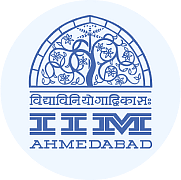Practice Questions: HCF & LCM | Quantitative Aptitude (Quant) - CAT PDF Download
Question 1: Number of students who have opted for subjects A, B and C are 60, 84 and 108 respectively. The examination is to be conducted for these students such that only the students of the same subject are allowed in one room. Also, the number of students in each room must be the same. What is the minimum number of rooms that should be arranged to meet all these conditions?
(a) 28
(b) 60
(c) 12
(d) 21
Correct Answer is Option (d).
- As we can see here that the total number of students are = 60+84+108 = 252
- Now given condition is that in one room only the students of the same subject can be there and the number of rooms should be minimum that means the number of students in a particular room will be maximum.
- This Maximum number of students will be HCF (Highest common factor) of 60, 84 and 108 and that will be 12.
- Hence, number of rooms will be = 252/12 = 21
Question 2: A red light flashes three times per minute and a green light flashes five times in 2 min at regular intervals. If both lights start flashing at the same time, how many times do they flash together in each hour?
(a) 30
(b) 24
(c) 20
(d) 60
Correct Answer is Option (a).
- A red light flashes three times per minute and a green light flashes five times in 2 min at regular intervals.
- So red light fashes after every 1/3 min and green light flashes every 2/5 min. LCM of both the fractions is 2 min.
- Hence, they flash together after every 2 min. So in an hour, they flash together 30 times.
Question 3: A is the set of positive integers such that when divided by 2, 3, 4, 5, 6 leaves the remainders 1, 2, 3, 4, 5, respectively. How many integers between 0 and 100 belong to set A?
(a) 0
(b) 1
(c) 2
(d) None of these
Correct Answer is Option (b).
- Let the number ‘n’ belong to set A.
- Hence, the remainder when n is divided by 2 is 1
- The remainder when n is divided by 3 is 2
- The remainder when n is divided by 4 is 3
- The remainder when n is divided by 5 is 4 and
- The remainder when n is divided by 6 is 5
- So, when (n+1) is divisible by 2,3,4,5 and 6.
- LCM of 2, 3, 4, 5 and 6= 60
- Hence, (n+1) is of form 60k for some natural number k and n is of the form 60k-1
- Between numbers 0 and 100, only 59 is of the form above and hence the correct answer is 1
Question 4: In Sivakasi, each boy’s quota of match sticks to fill into boxes is not more than 200 per session. If he reduces the number of sticks per box by 25, he can fill 3 more boxes with the total number of sticks assigned to him. Which of the following is the possible number of sticks assigned to each boy?
(a) 200
(b) 150
(c) 125
(d) 175
Correct Answer is Option (b).
- Let the number of sticks assigned to each boy be N.
- Let the number of boxes be M.
- So, the number of sticks per box = N/M
- Now, if he reduces the number of sticks in each box, the equation becomes N/(M+3) = N/M – 25
- So, 25 = N/M – N/(M+3)
- From the options, if N = 150, then, we get 25 = 150 [ 1/M – 1/(M+3) ]
⇒ 1/6 = 1/M – 1/(M+3) ⇒ M = 3- So, the number of sticks assigned to each boy = 150
Question 5: A new flag is to be designed with six vertical stripes using some or all of the colours yellow, green, blue and red. Then, the number of ways this can be done such that no two adjacent stripes have the same colour is
(a) 12 × 81
(b) 16 × 192
(c) 20 × 125
(d) 24 × 216
Correct Answer is Option (a).
- Any of the 4 colours can be chosen for the first stripe. Any of the remaining 3 colours can be used for the second stripe.
- The third stripe can again be coloured in 3 ways (we can repeat the colour of the first stripe but not use the colours of the second stripe).
- Similarly, there are 3 ways to colour each of the remaining stripes.
- ∴ The number of ways the flag can be coloured is 4(3)5 = (12) (3)4 = 12 x 81
|
191 videos|131 docs|110 tests
|
FAQs on Practice Questions: HCF & LCM - Quantitative Aptitude (Quant) - CAT
| 1. What is the meaning of HCF and LCM? |  |
| 2. How do you find the HCF of two numbers? |  |
| 3. Can the HCF of two numbers be greater than the numbers themselves? |  |
| 4. Is it possible for two numbers to have more than one LCM? |  |
| 5. Can you find the LCM of three or more numbers using prime factorization? |  |

|
Explore Courses for CAT exam
|

|


















